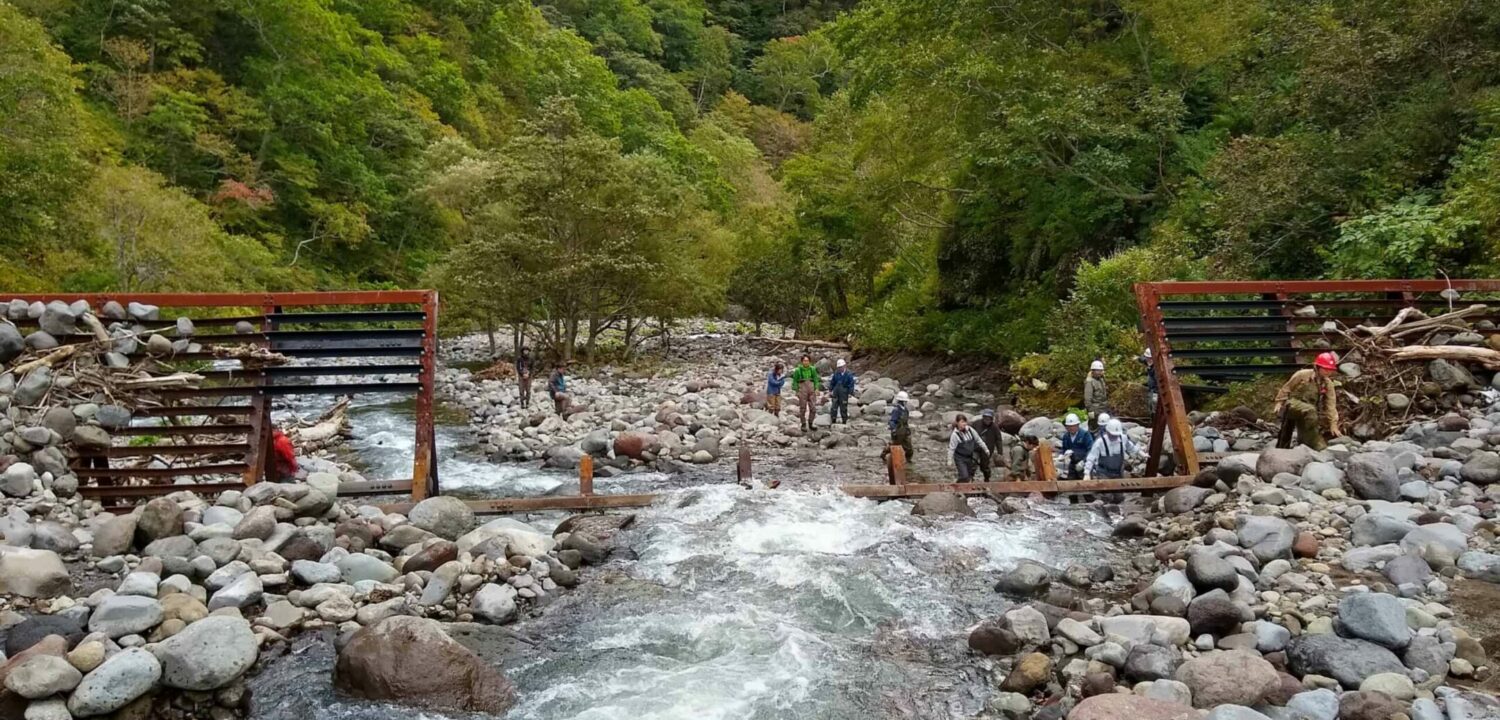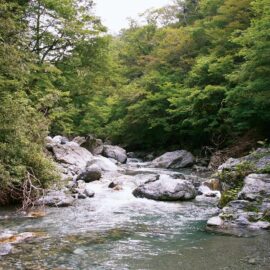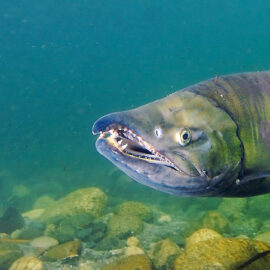A former Wild Salmon Center scientist has been tracking the restoration of Shiretoko National Park for nearly 15 years. This summer, its rivers (and wild salmon) are breathing a bit easier.
Back in 2006, Dr. Pete Rand was waist-deep in the Rusha, one of the most important rivers for masu, chum, and pink salmon in Hokkaido, in northernmost Japan. Around him stretched the island’s remote Shiretoko National Park, a 149-square-mile area newly listed as a UNESCO World Natural Heritage Site, singled out for its “outstanding universal value” and supposed connectivity from ocean to forest. And yet, here he was, staring at concrete barriers.
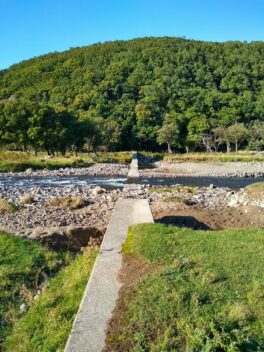
“Frankly, it was surprising to see the number of dams,” said Rand, a scientist with Prince William Sound Science Center who at the time worked for Wild Salmon Center. “I had this idea what a World Heritage Site should look like: natural. And this wasn’t in any kind of natural state.”
That, said Rand, was a problem, one he reported to UNESCO as chair of the IUCN Salmonid Specialist Group. Shiretoko’s watersheds were in fact highly disconnected—by 123 in-stream dams and structures, most built in the 1970s. Thirty-one of them served little modern purpose, other than to block salmon. Rand’s IUCN report strongly recommended these structures be modified or removed, to allow fish free passage. It would be a win for salmon, for the park’s grizzly population (Japan’s largest), and for tourists who came to see those bears, healthy and happily feeding on fish.
Yet little had changed eight years later, when Rand returned for an assessment. The park’s salmon hatchery had been decommissioned, and some dams had been “modified” with carved notches that might—in high water events at least—have allowed for incrementally better fish passage. Otherwise, the Rusha’s hatchery dams remained intact. And elsewhere in the park, steel-girded soil erosion dams still blocked the natural flow of sediment and rocks for habitat.
Rand was dismayed by the sluggishness of Shiretoko’s restoration—and surprised. “Every year or so, World Heritage reassesses all their sites, so there’s always a risk of losing that status,” he explained. “This is one of very few sites [in Japan] that have that international recognition—it’s really important to Japanese tourism.”
I had this kind of idea of what a World Heritage Site should look like: natural. And this wasn’t in any kind of natural state.
Rand again filed his reports. And when he next returned to Shiretoko, this past summer, his surprise was of the nice kind. Along the Rusha, two of three concrete dams had been stripped down to below the water line—a start. On the Okkabaka River, in-stream steel girding had been hacked back, with plans to completely remove the structures.
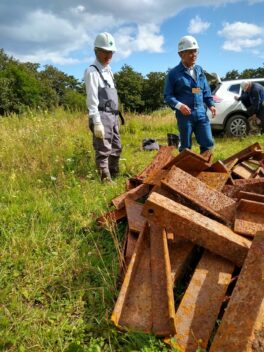
“It was dramatic to see the changes,” said Rand. “I’ve been frustrated; the pace of change has been very slow. But I was definitely pleased with this development.”
The full undamming of the Rusha and other rivers will take several more years, according to current schedules. But decades of restoration work isn’t unusual in the world of salmon conservation, where turtle-like progress—in this case, literally chipping away at concrete—is far more typical than, say, the sudden dynamiting of a large mainstem dam.
It’s work that wouldn’t happen at all, said WSC’s Western Pacific Director Mariusz Wroblewski, without the patient, persistent monitoring of dogged scientists like Pete Rand.
“This puts Japan within sight of an important milestone, one Pete and his colleagues have been working toward for years,” said Wroblewski. “It’s thanks to his diligence that we are this close to achieving free-flowing salmon rivers in Shiretoko.”
Once achieved, the undamming of Shiretoko’s rivers for salmon will represent something unprecedented in Japan.
“There’s only one other example of dam removal [in Japan],” explained Rand, “and it had nothing to do with salmon. This is the first example of a dam removed to return a river to its natural state. It’s never been done before in Japan.”
This is the first example of a dam removed to return a river to its natural state. It’s never been done before in Japan.
